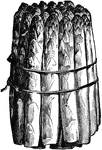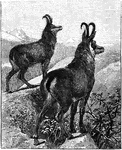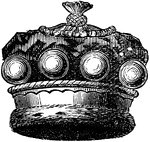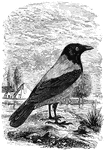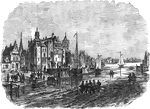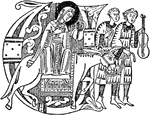
Ranunculus Aconitifolius
A plant which produces numerous flowers with oblong white petals. The leaves and stems are slightly…
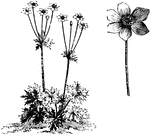
Habit and Flower of Anemone Narcissiflora
The anemone narcissiflora flower is usually cream colored and is sometimes purplish on the outside.…
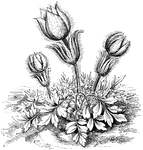
Anemone Vernalis Flower
The anemone vernalis flower is whitish on the inside and violet on the outside. This flower blooms in…
Antirrhinum Majus
Antirrhinum Majus is commonly known as Greater Snapdragon or Common Snapdragon. This flower grows in…
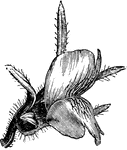
Antirrhinum Orontium Flower
Antirrhinum Orontium has rose or white colored petals. The petals are also striped with purple. This…

Apple Blossom
The apple tree is a strikingly handsome tree when in flower. The apple is known as the Crab in its wild…
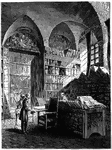
Italian Archives
An illustration of the Italy's Archives. An archive refers to a collection of historical records, and…

Asarabacca
"A plant of the natural order Aristolochiaceae, a native of Europe, growing in woods; rare, and perhaps…
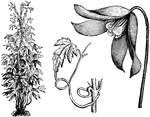
Atragene Alpina
The flowers of the atragene alpina shrub are blue, sometimes white. There are ten to twelve petals per…

European Bass
"Is one to three feet long, and has been celebrated from the time of Aristotle for its richness and…
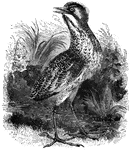
Common Bittern
The common bittern of Europe feeds at night, primarily on frogs, lizards, small birds, and fish.

European Blackfish
"Two to three feet long, remarkable for its swiftness and voracity; the color is black, the body covered…
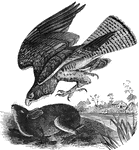
Common Buzzard of Europe
"B. vulgaris is twenty-two inches long, the head is large and the body heavy. Above, the color…

Common Carp
"It is ten to forty inches long, and sometimes attains the weight of a hundred pounds; the general color…

Feudal Castle of Rouen
An illustration of the feudal castle of Rouen. Rouen is the historical capital city of Normandy, in…

Common chameleon
Measuring between sixteen and eightenn inches long, the common chameleon of Europe is native to India…

Profile of Charlemagne
An illustration of the profile of Charlemagne, also known as Charles the Great, was King of the Franks…
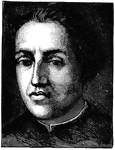
Christopher Columbus
Christopher Columbus (between August 25 and October 31, 1451 – May 20, 1506) was a Genoese navigator,…
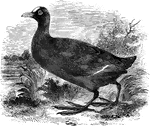
Common European coot
Averaging about sixteen inches in length, the common coot of Europe is found throughout Europe and Asia.
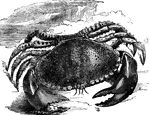
Common European crab
"These have the shell regularly rounded in front and narrowed behind; the legs are of moderate length,…
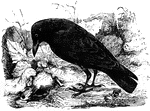
Carrion-Crow of Europe
The carrion-crow of Europe has been known to feed on decaying flesh, as well as young birds, shellfish,…
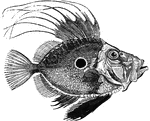
John Doree
"Average weight five pounds; found on the European coasts, and celebrated for the delicacy of its flesh.…

Mallard Ducks
The mallard, also known as the common wild duck averages about twenty-four inches in length. It inhabits…
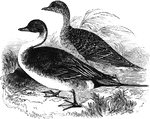
Pintail Duck
The pintail duck measures twenty-six to twenty-eight inches in length (including the tail), and is found…
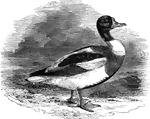
Common Sheldrake Duck
Also known as the burrow-duck and the sly goose, the common European sheldrake has been known to make…
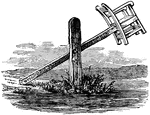
Ducking Stool
Used as a form of humiliating punishment for angry women, a ducking stool was "a stool or chair in which…

Flowers of Erythraea Diffusa
The common name of erythraea is centaury. Erythraea diffusa flowers are a bright, deep rose. The plant…

Escorial
"One of the most remarkable buildings in Europe, comprising at once a convent, a church, a palace, and…

Escorial
"One of the most remarkable buildings in Europe, comprising at once a convent, a church, a palace, and…
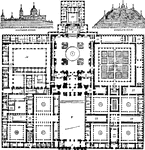
Escorial
"One of the most remarkable buildings in Europe, comprising at once a convent, a church, a palace, and…

Ranunculus Ficaria
A plant with bright yellow flowers and short stems. They tend to bloom between March and May in Europe.

Hawfinch
Feeding on pollen-stalks, laurel-berries, and the like, the haw-finch is also known as the common grosbeak…
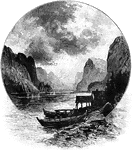
Fiords on Norway Coast
Fiords are valleys that were deeply eroded by slowly moving masses of ice called glaciers, subsequently…
Scabbard Fish
Lepidopus caudatus. "1. A fish of the family Lepidopodidae, Lepidopus caudatus,of the Mediterranean…

Flounder
"Is found at the mouths of nearly all European rivers, and is especially abundant where the bottom is…

Gadwall
The gadwall (or gray duck) is nineteen inches long, and is found throughout Europe and America, as well…
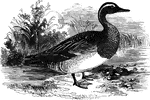
Garganey
Also known as the summer teal, the garganey is sixteen inches long and found in Southern Europe and…
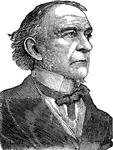
William Gladstone
"He assisted in the making of history for nearly half a century, and is, in some respects, the most…
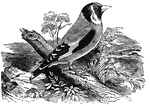
Common Goldfinch of Europe
Also known as the thistle-finch, it is often kept as a pet and taught to do tricks.

Ground Ivy
Ground Ivy (Glecoma hederacea) is a common European labiate hedgerow plant, with trailing stems, kidney-shaped,…

Herdsman of the Alps
"The herdsman of the Alps leads a life peculiar to his race and land."-Lupton The Alps are located in…

Gray Heron
Also known as the crested heron, the European gray heron ranges from Middle and Southern Europe into…

Jacob's Ladder
A perennial plant that is usually blue and erect, with oval petals. It is commonly found in the temperate…
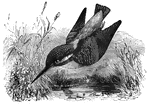
European Kingfisher
Found throughout Middle Europe, the European Kingfisher is a solitary bird that inhabits wet areas,…
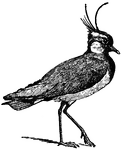
Lapwing (or Peewit)
A handsome plover-like bird of Northern Europe and Asia (Vanellus cristatus), also known in Great Britain…
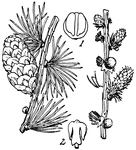
Larch, Cone and Flowers (male and female)
Larch, or Larix, is a genus of hardy, deciduous, coniferous trees of very graceful habit. They bear…
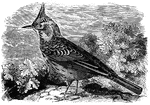
Crested Lark
Feeding mostly on worms and grain, the crested lark frequents Northern Europe i nthe summer, and Southern…
